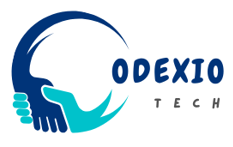In today’s fast-paced software development landscape, integrating security seamlessly into the development pipeline has become more important than ever. This has led to the rise of DevSecOps tools, a crucial part of modern software development processes. These tools help bridge the gap between development, security, and operations, ensuring that security is not an afterthought but a built-in part of the development lifecycle. In this article, we will explore the essential DevSecOps security tools that every development team should consider and how they contribute to a secure and efficient DevSecOps process.
What is DevSecOps?
DevSecOps stands for Development, Security, and Operations, a culture and set of practices that aim to integrate security practices within the DevOps process. The goal is to ensure that security is baked into the software development process rather than being added at the end. DevSecOps emphasizes collaboration among development, security, and operations teams to identify and mitigate security risks as early as possible.
Incorporating DevSecOps tools into this process helps teams automate security checks, reduce vulnerabilities, and ensure compliance, all while accelerating the development and delivery of software. But with so many DevSecOps security tools available, how do you choose the right ones?
Key Features of DevSecOps Tools
Before diving into specific tools, it’s important to understand the essential features of DevSecOps tools:
- Automation: DevSecOps tools should automate security testing and monitoring throughout the CI/CD pipeline, helping developers identify vulnerabilities early.
- Integration: These tools need to integrate with existing DevOps platforms like Jenkins, GitLab, and GitHub.
- Real-time Threat Detection: DevSecOps tools should provide real-time insights into vulnerabilities and potential threats.
- Compliance and Reporting: Effective tools should automate the process of ensuring compliance with security standards like GDPR, HIPAA, and PCI DSS.
Popular DevSecOps Tools
Here are some of the most popular and widely used DevSecOps security tools that can significantly improve the security posture of your development pipeline:
1. Snyk
Snyk is a developer-first security tool that focuses on identifying vulnerabilities in open-source libraries and containerized applications. With its seamless integration into the development workflow, Snyk helps developers automatically detect and fix vulnerabilities in real-time. Snyk also integrates with popular version control systems such as GitHub, GitLab, and Bitbucket, making it a go-to DevSecOps tool for developers.
Key Features:
- Vulnerability scanning for open-source libraries and containers
- Automated remediation and security patching
- Real-time alerts on newly discovered vulnerabilities
2. Aqua Security
Aqua Security is a powerful platform designed specifically to secure cloud-native applications and containers. It helps automate security throughout the development lifecycle, from code to production. Aqua Security is particularly useful for teams adopting Kubernetes, Docker, and other container technologies.
Key Features:
- Container and Kubernetes security
- Vulnerability scanning in Docker images and Helm charts
- Cloud-native threat detection
3. Checkmarx
Checkmarx is a leading DevSecOps security tool that focuses on static application security testing (SAST). It allows developers to identify vulnerabilities in the source code early in the development process. Checkmarx integrates with popular CI/CD pipelines to provide continuous security testing as part of the build process.
Key Features:
- Static application security testing
- Seamless integration with development tools like Jenkins and Azure DevOps
- Real-time security feedback to developers
4. Fortify
Fortify by Micro Focus is an enterprise-grade security solution that provides both static and dynamic application security testing (SAST and DAST). It scans source code, binaries, and running applications for vulnerabilities and ensures compliance with security standards.
Key Features:
- Static and dynamic analysis for comprehensive security testing
- Integration with various IDEs, build systems, and CI/CD tools
- Detailed reporting and remediation suggestions
5. SonarQube
SonarQube is an open-source platform that helps developers continuously inspect the quality and security of their code. It provides static analysis for detecting bugs, code smells, and security vulnerabilities. By integrating SonarQube into your CI/CD pipeline, you can ensure that code quality and security are continuously monitored.
Key Features:
- Continuous inspection of code quality
- Detection of security vulnerabilities and code smells
- Integration with various build systems and version control platforms
6. Tenable.io
Tenable.io is a comprehensive vulnerability management platform that provides real-time visibility into security risks across your network and applications. With Tenable.io, security teams can continuously monitor and assess vulnerabilities and ensure that security risks are proactively managed.
Key Features:
- Continuous vulnerability scanning
- Risk assessment and prioritization
- Cloud-native and on-premises integration

Benefits of Using DevSecOps Security Tools
The adoption of DevSecOps tools offers several key benefits to development teams and organizations as a whole:
1. Faster Vulnerability Detection
Traditional security testing occurs late in the development process, often after code is deployed. By integrating security checks into the DevOps pipeline, DevSecOps security tools enable faster detection of vulnerabilities, allowing teams to fix issues before they reach production.
2. Reduced Development Time
With security automated throughout the pipeline, developers don’t have to spend additional time manually checking for security flaws. This results in faster code development cycles and quicker time-to-market for applications.
3. Cost Savings
Fixing security vulnerabilities early is far cheaper than addressing them after deployment. By identifying and remediating vulnerabilities during the development process, organizations can save significantly on post-deployment remediation costs.
4. Continuous Compliance
DevSecOps tools also ensure that security and compliance standards are continuously met throughout the development process. This is essential for businesses that must comply with regulatory requirements such as GDPR or HIPAA.
Conclusion
Integrating DevSecOps tools into your software development lifecycle is essential for building secure and resilient applications. With a growing number of DevSecOps security tools available, it’s crucial to choose the ones that best align with your development processes and security needs. Partnering with a DevOps managed service provider can help you select and implement the right tools for your organization. Tools like Snyk, Aqua Security, Checkmarx, Fortify, SonarQube, and Tenable.io provide a comprehensive approach to security automation, vulnerability detection, and compliance enforcement, ensuring your applications are both secure and high-quality from start to finish.

